Recently, Prof. Guohua Wu's group has made important research progress in the wire arc additive manufacturing (WAAM) of magnesium rare-earth (Mg-RE) alloys in partnership with Prof. Mark A. Easton from RMIT, and Dr. Ming Sun from the University of Shanghai for Science and Technology. The research results, entitled ‘Microstructural evolution and strengthening mechanism of Mg-Y-RE-Zr alloy fabricated by quasi-directed energy deposition’, were published in Additive Manufacturing, one of the top international academic journals in the field of additive manufacturing (the link is https://www.sciencedirect.com/science/article/pii/S2214860423001008). The first author is Doctoral candidate Xin Tong. Prof. Guohua Wu and associate Prof. Liang Zhang are the co-corresponding authors of this article. This work is supported by the National Natural Science Foundation of China.
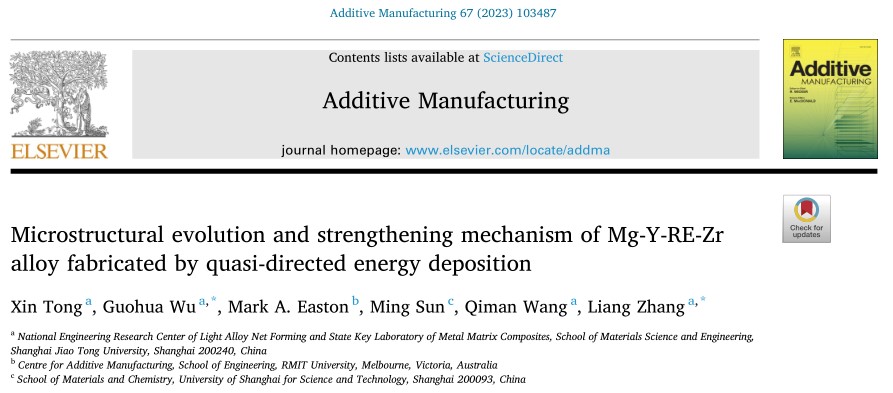
Due to the low density, high specific strength and stiffness, and good heat resistance, Mg-RE alloys exhibit broad application prospects in the fields of aerospace and transportation. With the increasing demands of complex structures and higher performance, it is difficult to meet the requirements through conventional fabrication methods such as casting and forging. Additive manufacturing can melt alloy powder or wire, fabricating the metallic components layer by layer. It exhibits the characteristics of a shorter manufacturing cycle and higher mechanical properties of the deposited alloy. At present, the studies on AM of Mg-RE alloys are mainly focused on laser powder bed fusion (PBF-LB). However, due to the extremely high oxygen affinity of RE-containing powders with high specific surface area, RE oxide inclusions are easily formed during the fabrication of Mg-Y-RE-Zr alloy by PBF-LB, which seriously deteriorate the mechanical properties of components. Therefore, it is necessary to optimize the additive manufacturing process and further explore the mechanisms of microstructure evolution and defect formation during additive manufacturing.
In order to solve the problem of insufficient strength-plasticity combination caused by serious oxidation inclusion of RE elements in additive manufactured Mg-RE alloy, Prof. Wu's team innovatively prepared Mg-4Y-3RE-0.5Zr alloy by the WAAM method. The content of RE oxide inclusions has been effectively reduced by the combination of a large-diameter welding wire and a pulsed current. The results show that the inclusion content in the deposited alloy is only 5% of that of the PBF-LB counterpart, which breaks through the bottleneck of serious RE oxidation in the additive manufacturing of Mg-RE alloy. Based on the measured thermal cycling curves and microstructure observations, the phase transformation behavior of Mg-Y-RE-Zr alloy during WAAM is revealed. Besides, a physical model is proposed for depicting the microstructural transformation and defects formation during WAAM, and the relevant strengthening mechanism is also discussed. This study provides theoretical support for the control of metallurgical defects and synergistic regulation of the strength and toughness of Mg-RE alloys fabricated by additive manufacturing.
In recent years, with the support of academician Wenjiang Ding, Prof. Guohua Wu's group has made a series of research achievements in the development, preparation, and forming of Mg-RE alloys with high performance, which makes important contributions to promoting the application of Mg-RE alloys.
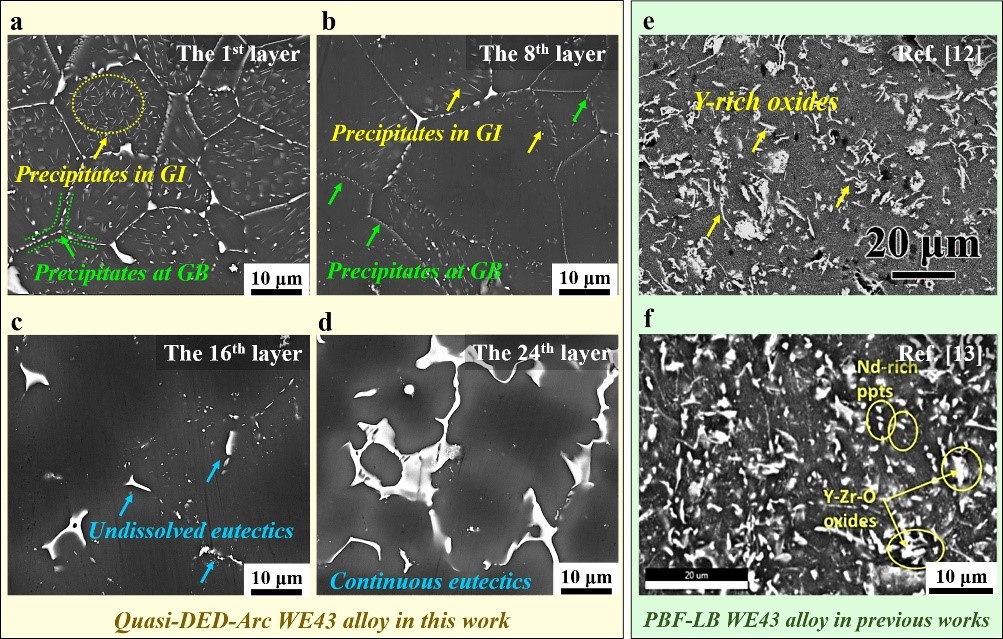
Fig. 1. SEM-BSE of the microstructure of WE43 alloy fabricated by quasi-DED-Arc in this work (a-d) and PBF-LB in previous studies (e, f).
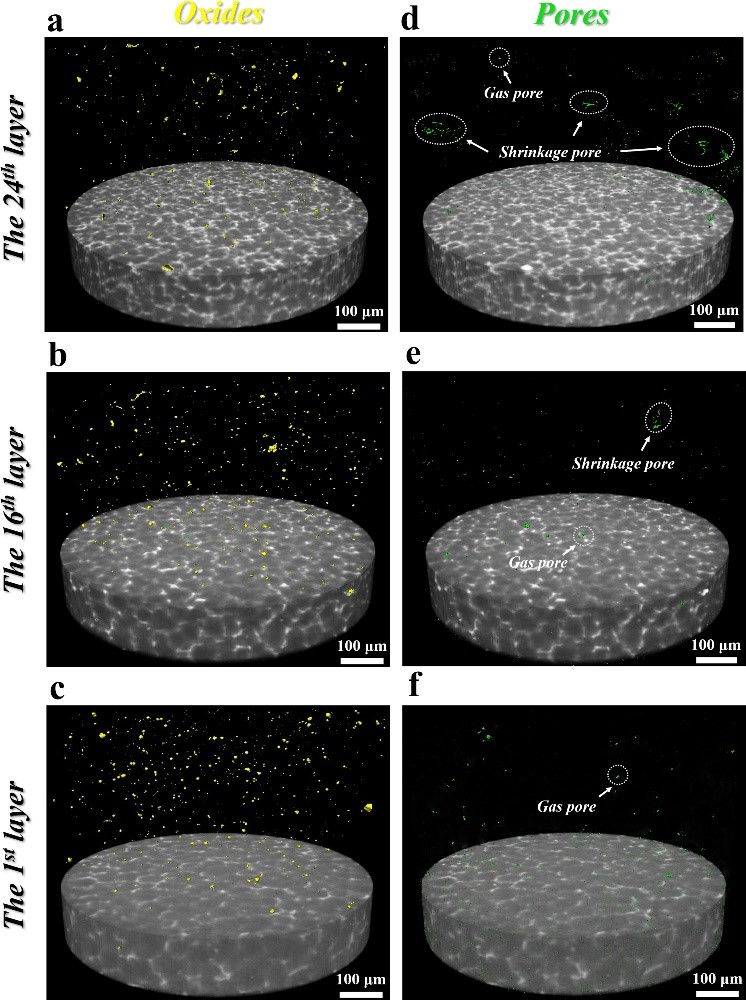
Fig. 2. Spatial distribution of the oxides (a∼c, in yellow) and pores (d∼f, in green) in the deposited WE43 alloy characterized by XRM: (a) and (d) the 24th layer; (b) and (e) the 16th layer; (c) and (f) the 1st layer.
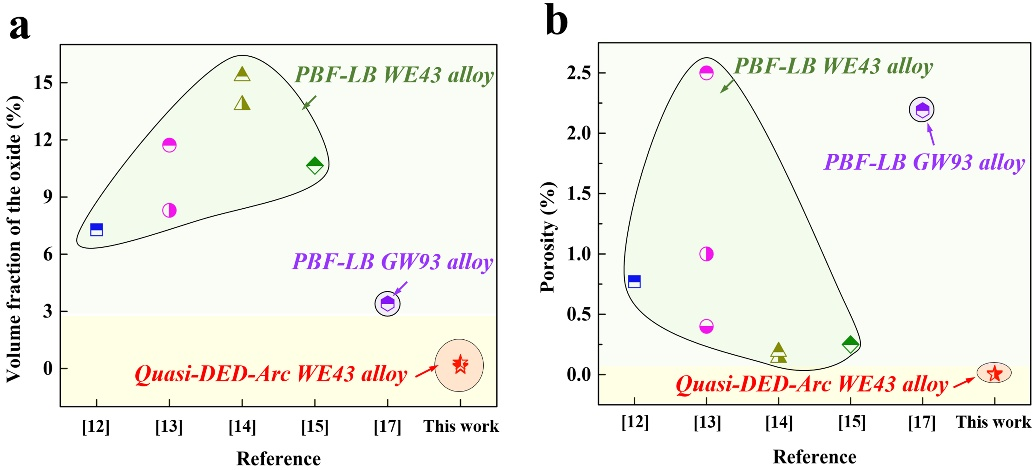
Fig. 3. Comparison of the volume fraction of the oxide (a) and the porosity (b) in as-built Mg-Y-RE-Zr alloys prepared by quasi-DED-Arc in this work or PBF-LB in previous studies.

Fig. 4. Inverse pole figures (IPF) (a∼d) and pole figures (e∼f) of the cross-section at different sampling layers of deposited WE43 alloy: (a) and (e) the 1st layer; (b) and (f) the 8th layer; (c) and (g) the 16th layer; (d) and (h) the 24th layer.
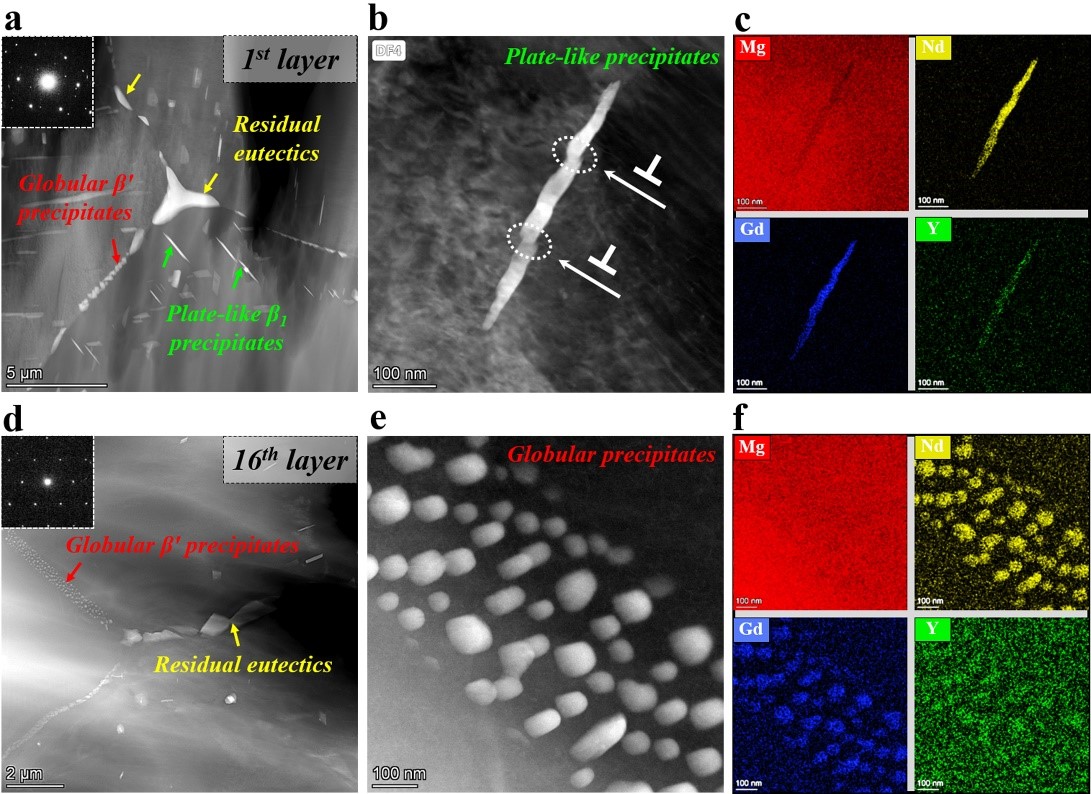
Fig. 5. TEM characterization of the RE-rich precipitates at different deposition layers: (a) and (d) precipitates formed around GBs triple junctions in the 1st and 16th layers, respectively; (b, c) and (e, f) higher magnification images and EDS mappings of the precipitates observed in (a) and (d), respectively.
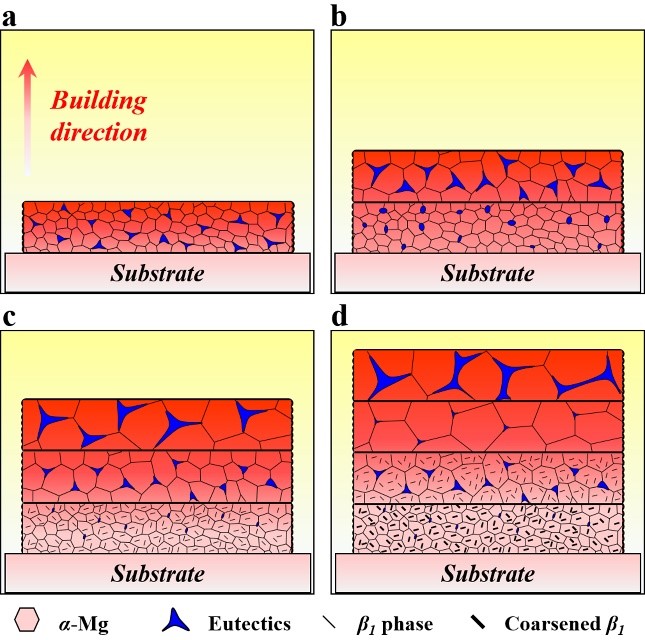
Fig. 6. Schematics showing the microstructure evolution with layer deposition during quasi-DED-Arc of WE43 alloy.

Fig. 7. Schematics showing the formation of the FBGs at the interlayer during quasi-DED-Arc of WE43 alloy.
Author: Xin Tong
